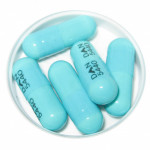If current trends continue, strains of gonorrhea could become resistant to all available antibiotics, putting the 800,000 Americans who contract the sexually transmitted infection (STI) annually at risk of an untreatable case. After issuing a strong warning in July about emerging drug resistance among U.S. gonorrhea cases, the Centers for Disease Control and Prevention (CDC) has just released new findings that heighten the urgency over how the STI is evolving to evade the existent antibiotic arsenal.
Currently, the only recommended treatment for gonorrhea is dual therapy with a single shot of ceftriaxone and an oral dose of azithromycin. In the past, the CDC has helped beat back emerging resistance to such antibiotics by revising gonorrhea treatment protocols. But further adjustments are no longer an option given the slate of antibiotics on the market. There are no other antibiotics left that still work against the STI, although researchers are searching for new options and have identified one treatment that showed promise in a recent Phase II trial.
For the first time, health officials have identified a cluster of strains of gonorrhea, found in Hawaii, that have both decreased susceptibility to ceftriaxone and a very high level of resistance to azithromycin. A decrease in an STI strain’s susceptibility to an antibiotic is an indication of emerging drug resistance. Researchers presented findings about the cluster at the 2016 STD Prevention Conference in Atlanta.
So far, the CDC has not identified anyone in the United States who has failed ceftriaxone and azithromycin treatment. So for now gonorrhea is universally treatable. However, because the STI has developed resistance to all other antibiotics used to treat it throughout history, it could be just a matter of time before today’s line of defense meets the same fate.
Health officials in Honolulu identified gonorrhea isolates collected from seven individuals in April and May that showed resistance to azithromycin at a much greater scale than typically seen in the United States. Five of the seven samples also showed decreased susceptibility to ceftriaxone.
“Hawaii is on the front line for antibiotic-resistant gonorrhea. We’ve been one of the first states to see declining effectiveness of each drug over the years,” Alan Katz, MD, MPH, a professor of public health at the University of Hawaii and a medical consultant at the Hawaii State Department of Health’s Diamond Head STD Clinic, said in a CDC press release. “That’s made us extremely vigilant, so we were able to catch this cluster early and treat everyone found who was linked to the cluster. But the future risk of gonorrhea becoming resistant to both of the recommended therapy medications in the United States is troubling.”
All seven individuals in the cluster were successfully treated for the STI with the two antibiotics. However, CDC officials are concerned that the existence of this cluster of infections indicates that such a strain is indeed transmissible.
“Using both drugs ensures patients are cured of infection and prevents further transmission, but to preserve this option, providers should treat infections right away with the combination of azithromycin and ceftriaxone,” Gail Bolan, MD, director of the CDC’s Division of STD Prevention, said in the same press release. “All health care providers should also promptly report any suspected treatment failure to local health officials and CDC to ensure rapid response to cases or clusters of concern.”
The troubling news about the Hawaii cluster was tempered by results presented at the conference from a randomized controlled Phase II trial of a new antibiotic treatment for gonorrhea, ETX0914. The treatment is given as a single oral dose. In early laboratory tests, it showed activity against strains of the STI that were resistant to other existing classes of treatments.
The new study included 179 people (167 men and 12 women) with gonorrhea who were treated with 2 or 3 grams of ETX0914 alone or ceftriaxone alone. All 47 of those who took 3 grams of the experimental treatment were cured, as were 98 percent (48 of 49) of those who took 2 grams. Twelve percent (21 of 179) of the participants reported side effects, although they were mostly mild and primarily gastrointestinal.
A much larger Phase III study is required before ETX0914 could be approved as a treatment for gonorrhea. So a number of years will likely pass before the treatment could hit the market.
To read a POZ feature on how condoms reduce the risk of bacterial STIs such as gonorrhea, click here.
To read the CDC press release, click here.
To read the CDC’s STI treatment guidelines, click here.
For a CDC timeline of the development of historical trends in gonorrhea drug resistance, click here.







Comments
Comments